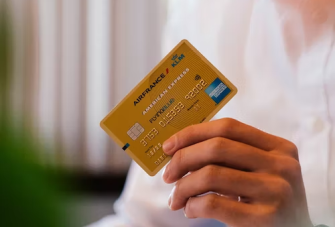What is Payment Processing?
Any business in our modern economy will need a payment processing solution. Without one, you could not accept credit, debit, and other non-cash payments.
When you buy a point of sale system, payment processing may or may not be included in the service. Many devices integrate with third-party payment processors, and you must choose one if you wish to accept credit cards and debit cards.
But what is payment processing and how does it work? Keep reading to learn more about this vital solution.
An overview of payment processing
When a customer purchases something with a credit or debit card, the bank needs to authorise the charge and ensure there are enough funds in the account. Additionally, it needs to transfer the fund to another bank, which then sends it to the business’s account.
A payment processor is a third party that acts as a go-between for your business and the financial institution. When a customer swipes their card, the payment processor communicates with all relevant banks to facilitate the transaction. It also ensures that the customer is using a valid bank account and card, reducing the risk of theft and chargebacks.
Of course, the payment processor charges the business for these services.
What do payment processors do?
Most payment processing systems follow the same series of steps to execute a transaction.
- The point of sale calculates the amount due
- The customers insert their card into the payment terminal
- The payment terminal encrypts the card data
- The payment processor sends the purchase request to the customer’s bank
- The customer’s bank sends the funds to the processor
- The processor directs the funds to the merchant’s bank
- The payment terminal confirms success or else displays an error message
Let’s look at what some of these terms mean.
Point of sale
The electronic point of sale system, or EPOS, is the device used to facilitate the sale of goods or services. These systems are similar to cash registers, but they have many more features. For example, a store can manage inventory, accept online orders, and see data in real-time with a retail EPOS.
When it comes to payment processing, the cashier rings up items on the POS during checkout. The POS then calculates the total amount due and sends this to the attached payment terminal.
Payment terminal
If you’ve ever used a credit or debit card to purchase something, you’ve like used a payment terminal. These devices are the credit card readers attached to cash registers and point of sale machines.
Modern payment terminals typically have:
- Display screens to instruct customers
- Keypads to add PIN codes
- Magstripe card readers
- Chip-and-pin slots
- Contactless RFID technology
When a customer is ready to pay, the payment terminal displays the total due. It then instructs customers how to insert the card, when to remove it, and if they need to type a PIN code.
How much do payment processors charge?
Processing fees vary across payment processors. Some charge flat rates, and others charge variable rates. The merchant is responsible for paying these fees.
Typically, a business will be charged a percentage and a set dollar amount. For example, 3% + £.30 per transaction. This percentage is to cover interchange fees (charges from banks and credit card companies) and the payment processing fee.
These fees are charged by:
- Banks: The bank that issues the card takes a small percentage of each sale.
- Credit card companies: The credit card association, such as American Express, charges an assessment on each transaction.
- Payment processors: The company that facilitates the transaction takes a cut on each purchase.
Flat rate pricing
The merchant pays a fixed percentage of the total sale price. Whether the customer spends £1 or £1,000, the business pays the same percentage to the payment processor. This pricing model is beneficial because the total fee stays the same no matter what the banks or credit card associations charge.
Example: A customer spends £100 on goods. The merchant pays a £3.30 processing fee (£100 x 3% flat rate + £.30)
Interchange plus pricing
The merchant pays for the processing fees charged by the banks and card companies, as well as a fixed fee charged by the payment processor. These charges can vary depending on what card issuer and bank the customer uses.
Example: A customer spends £100 on goods. The merchant can pay between 1% and 3% for bank and credit card fees. Then the payment processor can charge 1.8% to execute the transaction. In this scenario, the total fee could vary between 2.8% and 4.8%.
Epos Now payment processing options
When buying a EPOS, you should look for one with reliable, affordable payment processors. Epos Now partners with several companies across the world to provide dependable payment processing to our merchants.
Our systems integrate with the latest devices to accept:
- All major credit and debit cards
- Contactless options like Google Pay and Apple Pay
- Gift cards
Contact Epos Now today to learn more about our EPOS systems and payment processing partners.




